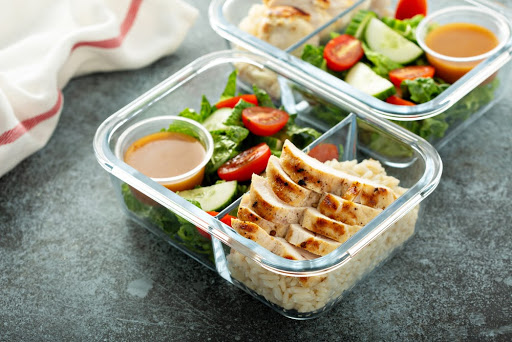As people get older, it’s important for them to make a conscientious effort to eat healthily.
 Proper nutrition can help improve people’s overall health while helping them stay active. Here are 6 things that you can do to have a healthy and balanced diet.
Proper nutrition can help improve people’s overall health while helping them stay active. Here are 6 things that you can do to have a healthy and balanced diet.
1. Have Plenty of Protein
Protein is an essential nutrient to maintain healthy muscles and mobility. All of your main meals should feature protein such as lean meats, chicken, fish, beans, or peas. When you snack between meals, choose healthy snacks high in protein such as nuts, granola, yogurt, and dried meats.
2. Get Enough Fiber
Fiber is an important part of maintaining good digestive health at any age. However, as people get older, their digestive systems can work a little bit slower than they used to. Keep your digestive health intact by eating foods that are rich in fiber such as leafy vegetables, fruits, beans, and whole-grain breads. Avoid eating lots of white bread, white rice, and high-gluten foods because they can slow down your digestive system and worsen constipation.
3. Stay Hydrated
Drinking lots of water is also important for good digestive health, and it helps every system in your body operate better. Your body is 70% water, so drinking plenty of water throughout the day is vital to maintaining good health. It’s especially important to drink lots of water when you wake up in the morning because your body can become dehydrated while you’re sleeping. Start your day off by drinking at least 8-16 ounces of water. Make water your preferred beverage as often as possible and try not to drink too much sugary soda or juice.
4. Avoid Lots of Sugary Foods
Sweet foods are a treat that you should enjoy occasionally, but they shouldn’t be a dietary staple. Eating lots of foods that are high in sugar fills you with empty calories, and it may keep you from eating the foods that your body really needs. Use sugar alternatives to reduce your sugar intake. Swapping out your sugar for something just as sweet won’t leave you feeling deprived.
5. Eat Low-Fat Dairy Products
Low-fat dairy products don’t only offer protein, they also provide a good amount of vitamin D. This key nutrient can help you maintain strong bones, teeth, and muscles. Low-fat yogurts are a great option because they also include healthy
probiotic drinks that can remove bacteria lining the walls of your digestive system. These bacteria slow down your digestive function and may also prevent you from absorbing all of the nutritional content of what you eat.
6. Incorporate Omega-3 Fatty Acids into Your Diet
One key nutrient that almost nobody gets enough of is omega-3 fatty acids. This amazing compound offers a number of physiological benefits including improved joint function and mobility. It has also been shown to help reduce the risk of heart disease, improve eye health, alleviate depression and anxiety, and fight age-related mental decline as well as Alzheimer’s disease. Foods that are rich in omega-3 fatty acids are fish, flax, walnuts, and kidney beans.